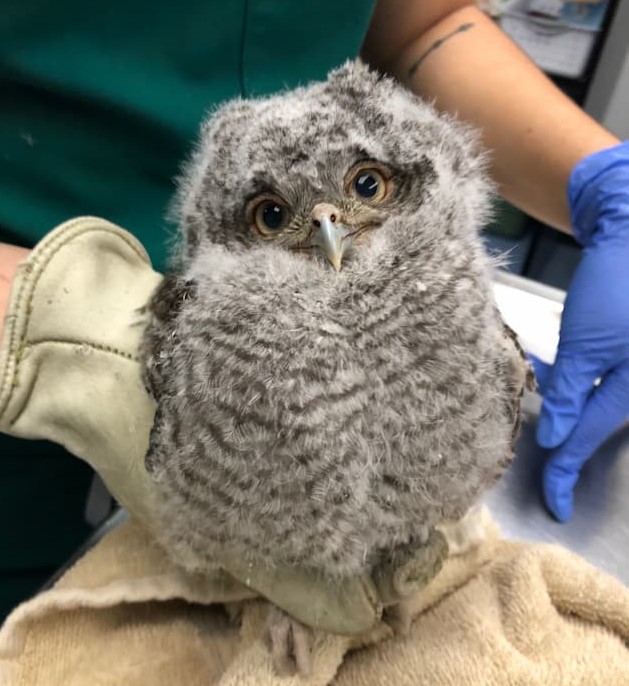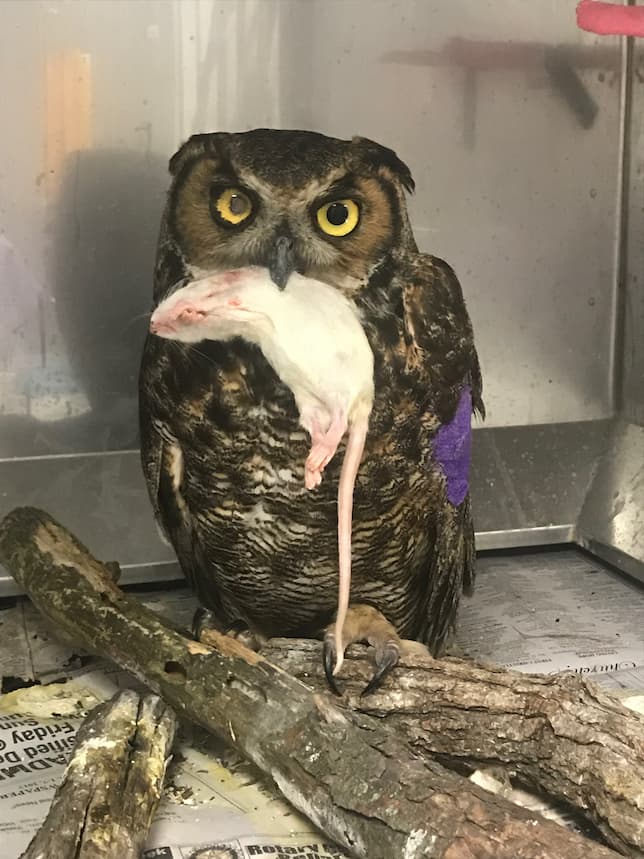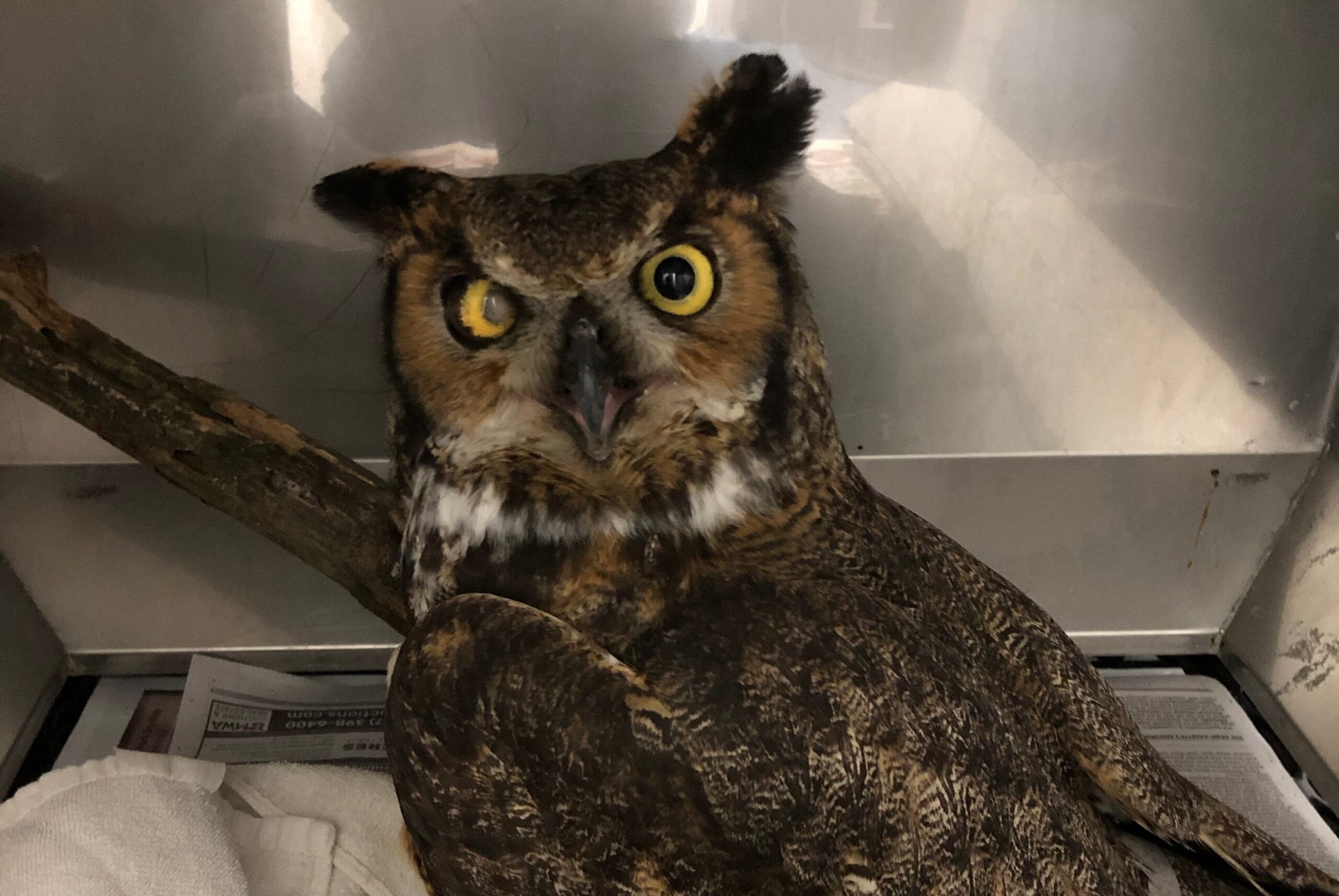Owls are one of the most unique raptors but are also a frequent species that we see at the Wildlife Medical Clinic. From the majestic Great Horned Owl to the small but mighty Eastern Screech Owl, these birds come in all different sizes. However, they also come with some adaptations that set them apart from a hawk or an eagle.
Owls can rotate their heads LESS than you think!

It is a common misconception that owls can rotate their heads 360 degrees because when people see videos of them, it very much looks that way. Instead, owls can rotate their heads a whopping 270 degrees which is still far more than the typical human, who can only rotate their head 160-180 degrees. For owls to turn their heads that much, they must cut off some blood supply. To allow this, owls have evolved a vascular reservoir system. The owl will pool blood in reservoirs near the base of the head and jaw while in rotation to still supply blood to the brain and eyes. This way they can still function and see (almost) all the way around their head!
Owls’ eyes are not circular like humans!
The main reason why owls evolved to be able to rotate their head so much is because their eyes do not move. An owl’s eyes are tube or cylinder shaped, and they do not move in their sockets as normal human and mammal eyes do. These tube-shaped eyes are set in the socket of the owl’s skull. One of the proposed reasons for this is because of owls’ phenomenal night vision. Owls have big eyes to be able to see at night but at the same time, have small skulls. Because of the anatomical limitations, the eyes of the owl evolved to change shape to allow their large eyes to fit in their head!
Owls are silent fliers!
Usually the bigger the bird, the louder its flight, but that is not the case for owls! Owls are known for their silent, smooth flight, which allows them to sneak up on prey during the night. Owls have relatively large wings for their body size, which allow them to fly relatively slowly with minimal wing flapping. The architecture of their wings is also unique to them. Owls have a special type of pattern on their wing feathers that break up the air that usually creates the flapping sound. Not only that, but owls’ feathers are more velvety than other birds and that helps dampen the sound. Hunting easier is not the only benefit. Silent flight may also cause owls to hear and track prey better. They don’t have to deal with the echoes of themselves flapping while they hunt, which allows them to be more accurate at tracking and targeting food.

Owls are amazing creatures, and it is pertinent that we keep these species safe and work towards conservation efforts to protect them. As stated previously, owls are one of the more frequently seen species at the Wildlife Medical Clinic and we commonly receive them after being hit by a car or after they are found tangled in a soccer net. To help minimize the number of dangers that owls face, you can help! In addition to rolling up sporting nets when not in use, people can set up an owl box in their backyard. This will help to attract owls and give them a safe place to live and raise their young. You can also contribute to owl safety by not using any rodenticide. Most owls’ main diet consists of rodents. If rodents end up ingesting rodenticide and then an owl eats that rodent, it can cause detrimental effects to the owl over time. Chronic ingestion of rodents containing rodenticide causes poisoning and this leads to the owl’s blood not clotting properly. Please do your part to help these amazing, unique, and beneficial creatures!
Sources-
https://www.owlresearchinstitute.org/attracting-owls-to-your-backyard
https://www.mcgill.ca/oss/article/did-you-know/owls-dont-have-eyeballs
https://www.audubon.org/news/13-fun-facts-about-owls
Written by Nina, Class of 2026


